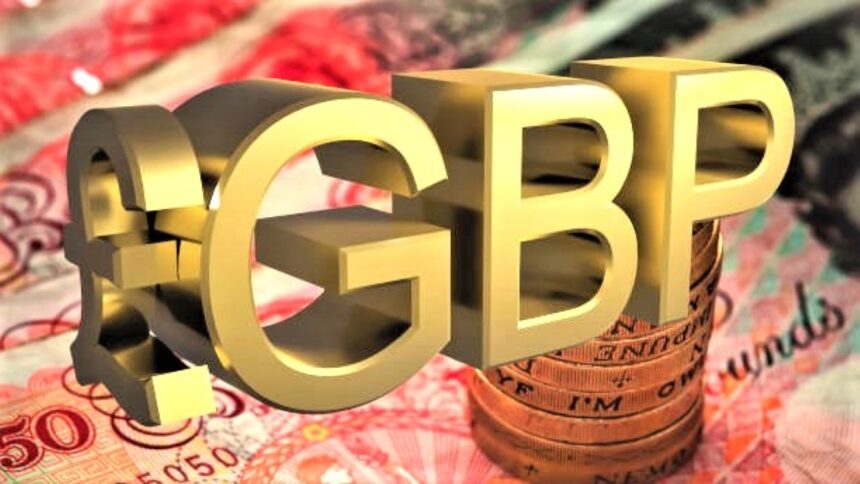Pound rises toward 1.3390 against the US Dollar as the latter trades.
The Pound Sterling (GBP) opened the new trading week on a robust footing, extending gains toward the 1.3390 mark against a broadly softer US Dollar. The move came even as investors heavily bet on an imminent 25 basis points (bps) rate cut by the Bank of England (BoE) at its upcoming May 8 policy meeting.
Despite the looming dovish turn by the BoE, the Pound managed to outperform its G10 peers. Several fundamental drivers helped pound maintain its resilience, while global risk sentiment and uncertainties over US-China trade negotiations pressured the Greenback.
Trade War Fears and Global Growth Concerns Shape Sentiment
Expectations of softer economic performance in major economies are escalating after renewed tensions between the United States and China. Former President Donald Trump claimed over the weekend that Chinese President Xi Jinping had called him to discuss the situation. However, Chinese authorities swiftly denied any such communication, adding more confusion to the already fragile trade landscape.
This backdrop of uncertainty has boosted risk-off sentiment, with markets cautious about adding aggressive positions in USD-denominated assets. The US Dollar Index (DXY), which measures the Greenback’s value against a basket of six major currencies, remained pinned inside Friday’s range around 99.50, reflecting investor hesitation.
Meanwhile, US Treasury Secretary Scott Bessent squarely placed the responsibility for progress on Beijing, stating that “it’s up to China to de-escalate, because they sell five times more to us than we sell to them,” during an interview with CNBC. Such combative rhetoric fuels concerns that the trade spat could drag on, increasing the odds of global growth slowdown and weighing on the Dollar.
Bank of England Signals Growing Dovishness
Back in the UK, the focus remains on the BoE’s next steps. Markets are almost fully pricing in a 25bps cut in the central bank’s main interest rate to 4.25%, as policymakers brace for the potential economic fallout from global trade tensions and fading inflationary pressures.
Speaking at the International Monetary Fund (IMF) Spring Meetings last week, BoE Governor Andrew Bailey emphasized that the central bank must be vigilant in assessing downside risks to growth. “We do have to take very seriously the risk to growth,” Bailey noted, although he dismissed the likelihood of the UK entering a recession in the near term.
Adding to the dovish tone, BoE policymaker Megan Greene voiced concern over the broader health of the UK economy. Greene highlighted that weak productivity growth and labor market vulnerabilities—particularly from increased employer contributions to social security—could further sap economic momentum. She also suggested that any escalation in US-China trade tensions would likely be “net disinflationary” for the UK, reinforcing expectations of easing inflationary pressures.
Potential Spillover Effects on Europe
The intensifying standoff between Washington and Beijing could have significant implications for European economies, including the UK. Analysts caution that if the US restricts imports from China, Beijing may turn to European markets to offload its goods, leveraging its competitive pricing advantage. While this could offer consumers lower prices, it may undermine domestic producers and weigh on overall business activity.
In the UK specifically, the risk of cheap Chinese imports flooding the market could pressure local industries, curb investment, and dampen hiring activity, further justifying a cautious policy stance by the BoE.
US Data in Focus: Fed Policy Outlook in the Spotlight
Investors will keep a close watch on a heavy slate of US economic data releases this week, including key indicators on employment, Gross Domestic Product (GDP) growth, and inflation trends. These releases are expected to heavily influence market expectations for the Federal Reserve’s (Fed) future monetary policy decisions.
According to the CME FedWatch Tool, markets overwhelmingly expect the Fed to leave its benchmark interest rates unchanged at 4.25%-4.50% during its May 6-7 meeting. Fed officials have reiterated that any policy adjustments would depend on achieving greater clarity regarding the economic outlook under the leadership of Trump.
The Fed’s “wait and see” approach has contributed to subdued volatility in the USD, but any upside surprises—or disappointments—in the data could quickly alter that dynamic.
Pound Technical Outlook
From a technical standpoint, Pound continues to show resilience above key support levels. The immediate hurdle remains near 1.3400, with a sustained move above that figure opening the door to further gains toward 1.3450. On the downside, key support lies at 1.3310, followed by stronger demand near the 1.3270 region.
Momentum indicators such as the Relative Strength Index (RSI) remain in positive territory on the daily chart, suggesting that bulls retain the upper hand in the short term.
However, traders should exercise caution as upcoming central bank decisions and geopolitical developments could introduce significant volatility.
Key Takeaways
- GBPUSD rises despite strong expectations of a BoE rate cut.
- Uncertainty around US-China trade talks pressures the US Dollar.
- BoE policymakers emphasize rising risks to growth and productivity.
- Markets await critical US employment, GDP, and inflation data this week.
- Fed expected to hold rates steady, with focus on economic data.
[faq-schema id=”39469″]









